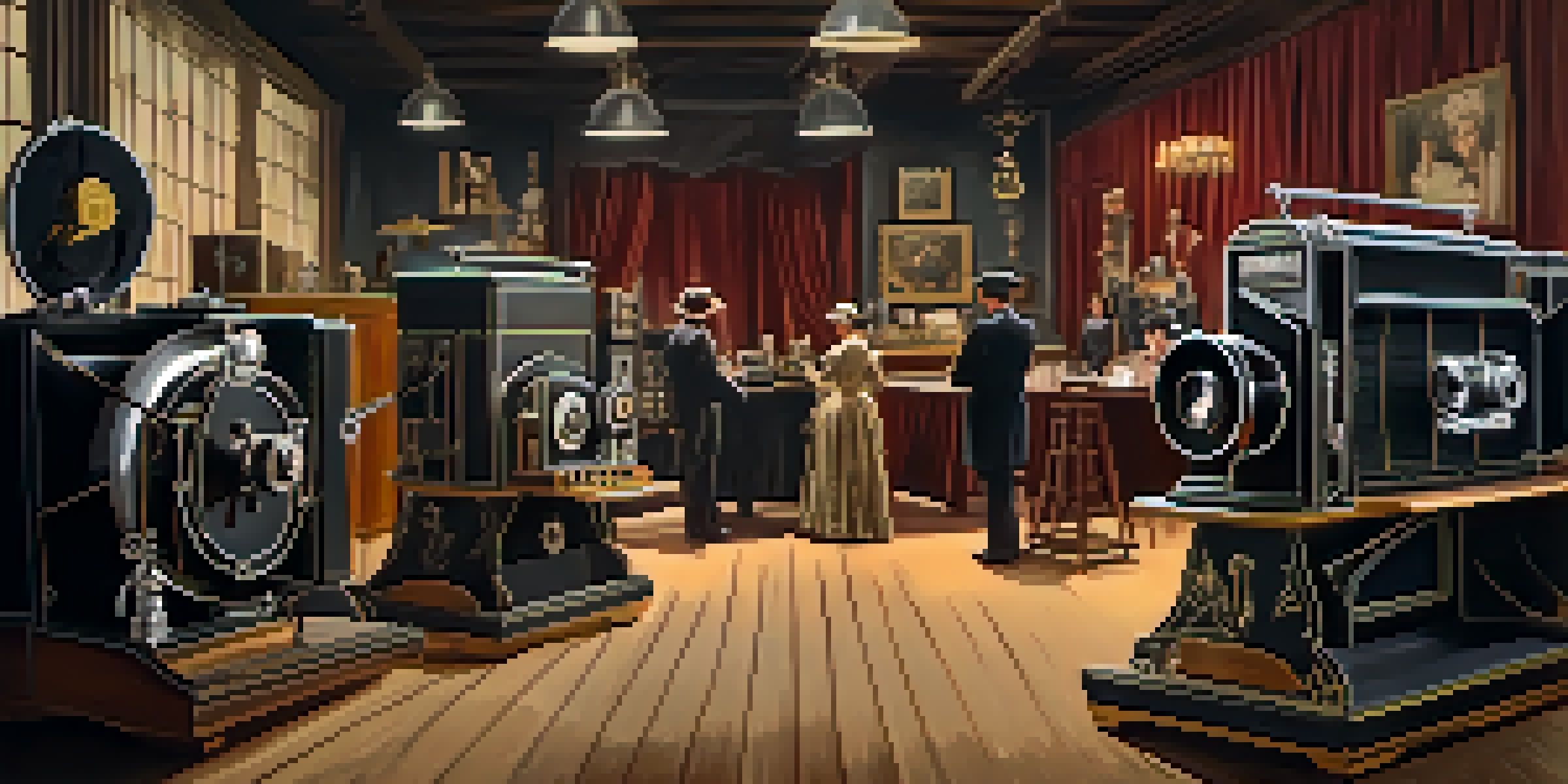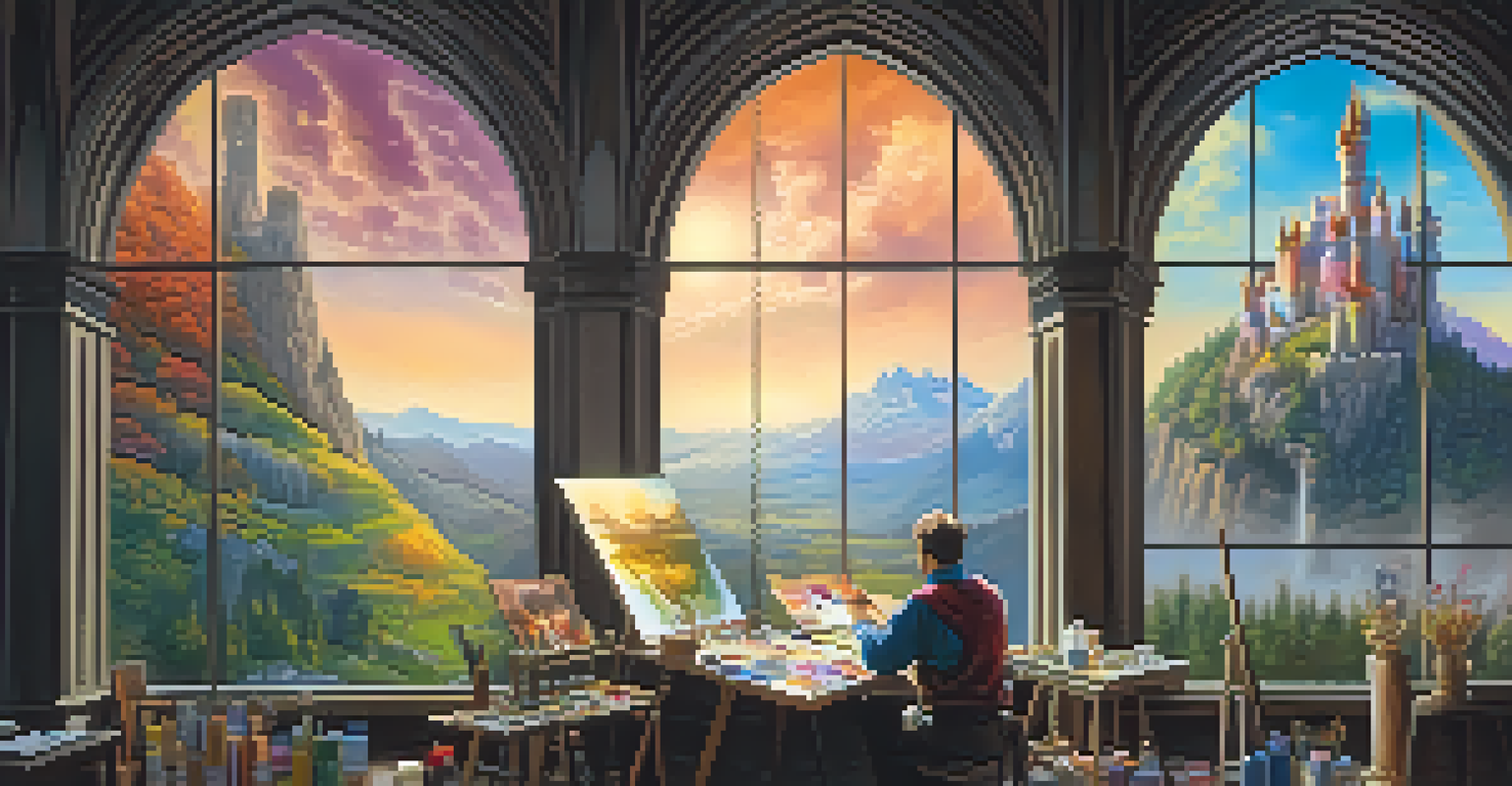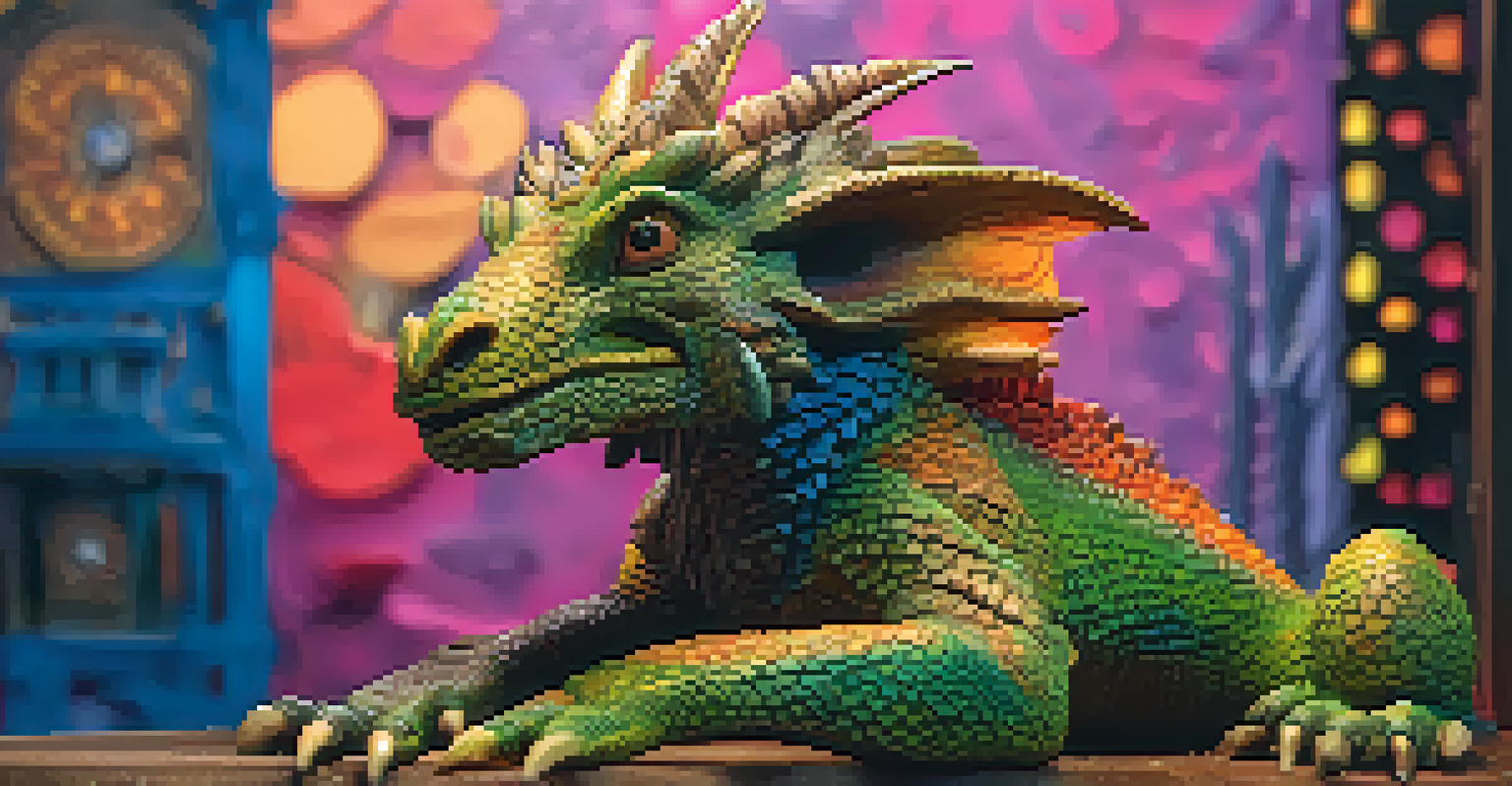The Birth of Special Effects: Early Techniques in Hollywood

The Dawn of Special Effects: A Brief Overview
Special effects have been a staple of filmmaking since the very beginning. From the silent film era to the golden age of Hollywood, filmmakers have always sought ways to create the impossible on screen. The evolution of these techniques laid the groundwork for the spectacular visuals we enjoy today.
The art of filmmaking is about creating illusions, and special effects are the tools that help us do that.
Early filmmakers used innovative methods to captivate audiences, often relying on practical effects that required creativity and ingenuity. These pioneering artists faced numerous challenges but found unique solutions to bring their visions to life. Their efforts were not just about entertainment; they were about pushing the boundaries of what cinema could achieve.
As we take a closer look at these early techniques, we uncover a rich history filled with experimentation and artistic flair. Understanding the birth of special effects helps us appreciate the craft behind our favorite movies and the dedication of those who paved the way for modern visual storytelling.
Silent Film Era: Illusion and Ingenuity
During the silent film era, special effects were primarily achieved through practical techniques. Filmmakers relied on clever camera tricks, such as double exposures and stop-motion animation, to create illusions that dazzled audiences. One famous example is the use of stage props and clever lighting to suggest supernatural elements in films.

Directors and cinematographers often had to think outside the box, using techniques like forced perspective to manipulate the viewer’s perception of scale and depth. These methods created iconic moments, such as in Georges Méliès' groundbreaking film 'A Trip to the Moon,' which featured imaginative sets and innovative edits.
Early Innovations in Special Effects
Filmmakers in the silent film era utilized practical techniques like camera tricks and stop-motion to create captivating illusions.
These early experiments set the stage for future advancements in special effects. By pushing the limits of their craft, these filmmakers laid the foundation for the technology and storytelling techniques that would evolve in the years to come.
The Rise of Matte Paintings and Miniatures
As the film industry progressed into the 1930s and 1940s, techniques like matte painting and miniature models became prominent. Matte paintings allowed filmmakers to create vast, detailed landscapes that were impossible to film in reality. By combining painted backdrops with live-action footage, they crafted breathtaking scenes that transported viewers to otherworldly places.
Special effects can create a world beyond our imagination, where the only limits are our creativity.
Miniatures also played a crucial role in storytelling, particularly in genre films like science fiction and fantasy. For instance, the use of miniatures in 'King Kong' allowed filmmakers to create the illusion of a giant ape terrorizing New York City. These meticulously crafted models added depth and realism to the narratives.
The combination of these techniques showcased the artistry and skill of the special effects teams. They transformed the film experience, allowing audiences to suspend disbelief and immerse themselves in fantastical worlds, paving the way for future innovations in visual effects.
Stop-Motion Animation: Bringing Characters to Life
Stop-motion animation emerged as a captivating technique in the early days of cinema, allowing filmmakers to create the illusion of movement by photographing models frame by frame. This technique was especially prominent in films like 'The Lost World' and later in the iconic works of Ray Harryhausen, who brought mythical creatures to life through his meticulous craftsmanship.
What made stop-motion so enchanting was its ability to evoke emotion and personality from inanimate objects. By carefully manipulating the models and capturing them in various poses, filmmakers could tell complex stories that resonated with audiences. Harryhausen's skeleton fight in 'Jason and the Argonauts' remains a beloved example of this art form.
Impact of Horror and Fantasy Genres
Genres like horror and fantasy pushed the boundaries of special effects, inspiring filmmakers through groundbreaking visuals in classic films.
Stop-motion not only showcased the creativity of filmmakers but also highlighted the potential for storytelling through animation. This technique would continue to evolve, influencing generations of animators and special effects artists in the years to come.
Innovative Editing Techniques: The Magic of Cuts
Editing has always been a crucial element in the world of special effects. Early filmmakers discovered that skillful editing could create stunning visual illusions, such as the famous match cut used by Edwin S. Porter in 'The Great Train Robbery.' This technique allowed for seamless transitions between different scenes, enhancing the storytelling experience.
The art of editing became even more sophisticated with the introduction of techniques like jump cuts and cross-cutting. These methods allowed filmmakers to convey complex narratives and create tension in their stories. For instance, D.W. Griffith’s 'Birth of a Nation' showcased innovative editing that enhanced the emotional impact of the film.
As the years went by, editing techniques continued to evolve, becoming more complex and integrated with special effects. This relationship between editing and effects would shape the future of filmmaking, leading to the dynamic visuals we see today.
The Influence of Horror and Fantasy Genres
The horror and fantasy genres played a pivotal role in the development of special effects in early Hollywood. These genres demanded innovative techniques to create suspense and wonder, leading filmmakers to experiment with various visual effects. Classic films like 'Frankenstein' and 'The Wizard of Oz' showcased groundbreaking effects that captivated audiences.
In 'Frankenstein,' makeup and prosthetics were used to transform actors into monstrous creatures, paving the way for a new era of character design in film. Similarly, 'The Wizard of Oz' used vibrant colors and imaginative effects to transport viewers into a magical realm, demonstrating the power of visual storytelling.
Legacy of Special Effects Today
The foundational techniques developed in early Hollywood continue to influence modern filmmaking, blending traditional craft with advanced technology.
These films not only entertained but also inspired future generations of filmmakers to explore the possibilities of special effects. The creativity sparked by horror and fantasy films helped establish special effects as an essential component of cinematic storytelling.
The Legacy of Early Special Effects in Modern Cinema
The special effects techniques developed in early Hollywood have left a lasting legacy that continues to influence modern filmmaking. Many of the foundational principles established by pioneers are still in use today, albeit with advanced technology. Understanding these roots helps us appreciate the artistry behind contemporary visual effects.
While technology has evolved, the core idea of creating immersive experiences for audiences remains unchanged. Modern filmmakers often draw inspiration from the practical effects used in classic films, recognizing the charm and authenticity they bring to storytelling. This blend of old and new has resulted in some of the most memorable cinematic moments.

The journey of special effects from early techniques to today’s digital wonders showcases the creativity and innovation of the film industry. As we continue to explore new technologies, it's essential to remember the pioneers who paved the way for the spectacular visuals we enjoy in cinema today.